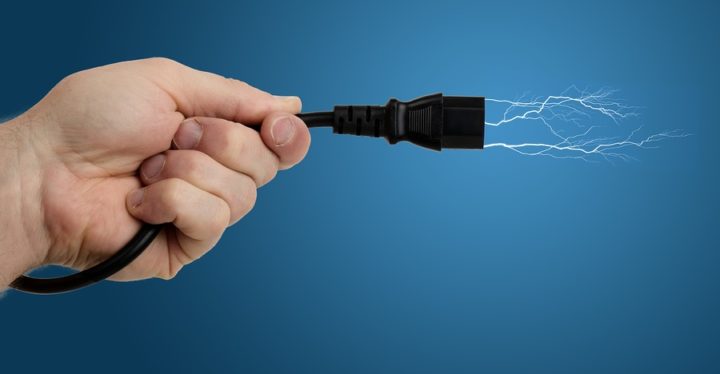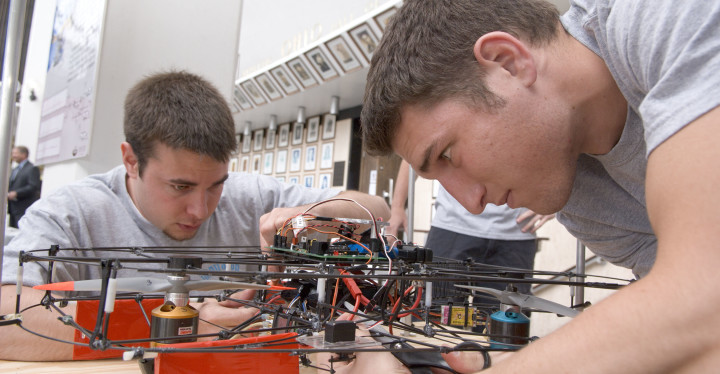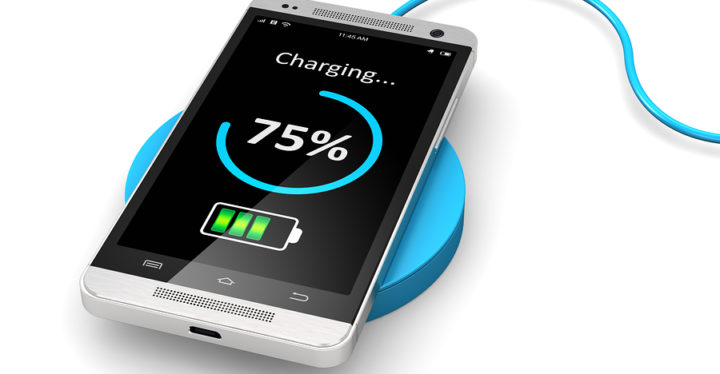Selected Developments in Wireless Power Transfer Standards and Regulations
Abstract
Selected advances in the use and development of wireless power transfer (WPT) standards and regulations in Europe and Japan are reported. The European research program COST-WiPE (European cooperation in science and technology–wireless power transmission for sustainable electronics) is described as a means to enhance interaction between research and standardization. WPT electronics are also reviewed in terms of frequency based on recent publications. Furthermore, activities in the context of the International Telecommunications Union (ITU) and especially recent Japanese contributions with a focus on far field systems are given.
I. Introduction
Wireless Power Transfer (WPT) is gaining traction in many application domains because it offers the possibility of batteryless operation and wireless charging. Although wireless charging frequently gets the attention of the media, batteryless operation can bring major benefits for the environment and the massive deployment of wireless sensors in the Internet of Things (IoT) [1], [2].
It is generally agreed that WPT devices operate in two fundamental ways: the so-called near field and far field. These terms refer to the region of the electromagnetic field which interacts with the receiver. Near field is associated with induction whereas far field is associated with radiation.
Any wireless device in the real world operates in a densely populated frequency spectrum. Standards and regulations ensure that any new technology is conditioned properly in order to be marketed commercially. Two of the most important parameters in terms of standards and regulations are frequency and power. Both of these parameters affect nonionizing radiation safety [8] and electromagnetic compatibility. Thus it is vital that any research is done with the standards in mind [7], [9]. However, the regulatory framework for WPT is complicated because of the large number of organizations involved, the interactions among them [3], and the uneven stage of research and development (R&D) in different parts of the world.
In Section II, a current European research program that takes into account standards and regulations is described, highlighting the necessity to diffuse knowledge to researchers and back into regulators. A brief survey of published WPT systems show that these operate in specific frequency bands (Section III). Although, near field systems seem to be gaining more commercial momentum, the field of WPT-FF (wireless power transfer-far field) [4] can offer substantial applications and benefits. Recent developments in the context of the ITU are given in Section IV.
II. The European COST Program WiPE
In the European Union, a well-known research framework is COST (European cooperation in science and technology) [5]. The COST Association is an International not-for-profit association that integrates all management, governing, and administrative functions necessary for the operation of the framework. The COST Association currently includes 32 member countries. Its programs act as focal points on currently important topics in order to facilitate exchange among research partners.
In the area of WPT, the program Wireless Power Transmission for Sustainable Electronics (WiPE) [6] was begun in mid-2013 with a completion date of mid-2017. WiPE aims to address efficient WPT circuits, systems, and strategies especially tailored for batteryless systems. Battery-free sensors, passive RFID, and near field communications (NFC) are systems that make use of WPT and energy harvesting to remotely power up mobile devices or to charge batteries.
There are five research workgroups (WGs) each dedicated to a specific area of importance. These are
- Far field WPT systems;
- Near field WPT systems;
- Novel materials and technologies ;
- Applications (space, health, agriculture, automotive systems, home appliances);
- Regulation and societal impact.
The first two workgroups follow an effective classification of WPT systems in terms of engineering operation. The other three WGs are looking at WPT from a higher level and cut across all WPT systems. WPT and its related applications are new technologies which generate substantial market interest. This fact presents additional challenges: (1) researchers should know about standards and regulations such as exposure limits for electromagnetic fields, e.g., specific absorption rates in the human body, and to follow the development of new regulations; and (2) standards and regulation bodies should be informed about research efforts in this field, especially on the issues of preferred spectrum bands, potential interference with other wireless communication systems, and radiation safety studies.
Such a standards aware research approach offers a plausible way to enhance the education of engineers (in a senior undergraduate or graduate level) through research-led teaching [10]. The term research-led is centered around the notion that research results should not be cut out from teaching and instead should provide opportunities to enrich and differentiate the material given to the aspiring engineer. In this way, standards and regulations can be more easily integrated into coursework instead of teaching a general course dedicated to standards and regulations (Fig. 1).
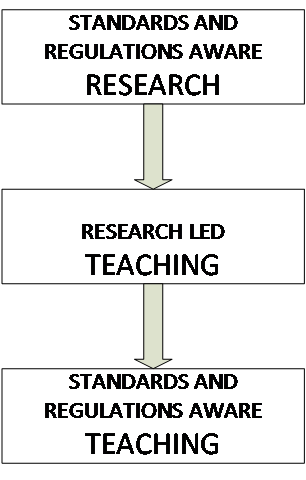
Fig. 1. A possible scheme for enhancing the diffusion of standards and regulations into teaching.
III. Utilization of ISM and Other Frequency Bands
Frequencies are not given for free. In fact, spectrum as a scarce resource is quite expensive, and in most cases frequencies are licensed with a substantial fee. However, when the interference potential of a device is low (e.g., a short range device) then this device can operate as a secondary user without paying frequency fees. There are some specific frequency bands that are intended for industrial, scientific, and medical (ISM) uses. The use of these frequencies requires no licensing, is in general straightforward, and thus popular. On the other hand, as frequency of operation goes higher, the interference potential gets stronger, and subsequently an allocation of a frequency band for dedicated use as a separate service becomes necessary. Many recent realizations of WPT circuits are in ISM frequency bands. A brief survey of publications in IEEE and other journals reveals a preference for the lower frequencies up to 13.56 MHz (Table I).
Table I
Most popular frequency bands in use by WPT systems.
| No | Frequency(MHz) |
|---|---|
| 1. | 0.020 |
| 2. | 0.125 |
| 3. | 0.200 |
| 4. | 6.78 |
| 5. | 13.56 |
| 6. | 27.12 |
| 7. | 40.68 |
| 8. | 433.92 |
| 9. | 915 |
| 10. | 2,450 |
| 11. | 5,800 |
IV. Developments for WPT Devices in the ITU
The ITU is the global ICT regulator. Whenever a new wireless technology appears, frequency allocation is the most important issue to consider. This allocation is greatly facilitated by the input of interested stakeholders and countries that develop these technologies. For example, countries with a large automotive industry (Japan and Korea in particular) have already developed national standards and regulations for near field systems [3]. A global frequency allocation goes through the ITU and in specific ITU-R (radio communications), one of the three ITU divisions. A global effort is necessary for spectrum harmonization across the globe, which greatly facilitates economies of scale.
ITU-R deals with new technologies by employing specialized teams of experts called study groups (SGs). WPT matters fall under the jurisdiction of SG1 (study group 1). In order to expedite the developments, subgroups are formed whose task is to answer specific mandates of a formal document called Question. In the case of WPT, this Question bears the code 230/1 and was issued in 2012 to be handled by technical subgroup working party 1A. The proceedings of this ongoing effort can be found online [12].
A Question is considered resolved when recommendations and reports are developed. The text with the regulatory force is the recommendation, with much more technical detail given in an associated report. In the area of near field (or non-beam as they are termed by the ITU), the ITU report has now been published [13]. Recent contributions are aiming toward a report and a recommendation for FF, e.g. see [12], [14], [15], and [16] from Japan. The input from industry and research institutes is significantly eased by alliances such as the Wireless Power Transfer Consortium for Practical Applications (WiPoT) of Japan [17].
Table II
Applications of wireless power transfer in far field and potential frequency bands [14].
| ID | Application | 2.45 GHz band | 5.8 GHz band | 900 MHz band |
| 1. | Wireless Powered Sensor Network | ● | ||
| 2. | Wireless Charger of Mobile Devices | ● | ||
| 3. | WPT in a Metal Pipe | ● | ||
| 4. | Microwave Buildings | ● | ||
| 5. | 2D (Surface) WPT | ● | ● | |
| 6. | Wireless Charging for Electric Vehicles | ● | ● | |
| 7. | Point-to-Point WPT | ● | ● | |
| 8. | WPT to Moving/Flying Target | ● | ● | |
| 9. | Solar Power Satellite | ● |
Besides charging, there are many interesting applications in the far field which cannot be covered by near field, e.g., the possibility of a space solar power satellite [11], as well as other possibilities which are shown in Table II. The preferred frequency bands of interest for WPT-FF are 2.45 GHz and 5.8 GHz.
Conclusion
There are a multitude of parallel activities in the regulatory and standards organizations in the field of WPT. Diffusion of these activities and awareness in research programs in the field of WPT is necessary. EU COST program WiPE was described as a case study of how standards and regulations can be explicitly integrated in research. Furthermore, it was stressed that WPT-FF requires more standardization work and regulations that in turn need to be informed by research studies. Contributions by Japan in the area of far field WPT have been described in the context of recent ITU regulatory activities.
Acknowledgment
The work of C. Kalialakis, N. Carvalho, and A. Georgiadis was supported by EU COST Action IC1301 WiPE. The work of C. Kalialakis and A. Georgiadis was further supported by EU H2020 Marie Sklodowska-Curie grant agreements No. 661621 and No. 654734.
References
[1] K. Wu, D. Choudhury, and H. Matsumoto, “Wireless power transmission, technology, and applications [scanning the issue],” Proc. IEEE, vol. 101, no. 6, pp. 1271–1275, June 2013. [2] S. Kim et al., “Ambient RF energy-harvesting technologies for self-sustainable standalone wireless sensor platforms,” Proc. IEEE, vol. 102, no. 11, pp. 1649–1666, Nov. 2014. [3] C. Kalialakis and A. Georgiadis, “Regulatory framework for wireless power transfer systems,” Wireless Power Transfer, vol. 1, no. 2, pp 108–118, 2014. [4] N. Shinohara, Wireless Power Transfer via Radiowaves. London: ISTE Ltd., 2014. [5] COST [Online]. Available: www.cost.eu [6] WiPE [Online]. Available: http://www.cost-ic1301.org/ [7] E. Grudzinski, and H. Trzaska, Electromagnetic Field Standards and Exposure Systems. Edison, NJ: SciTech Publishing, 2014. [8] X. L. Chen et al., “Human exposure to close-range wireless power transfer systems as a function of design parameters,” IEEE Trans. Electromagn. Compat., vol. 56, no. 5, pp. 1027–1034, Oct. 2014. [9] A. C. Polycarpou, A. Boursianis, T. Samaras, A. Bletsas, and J. N. Sahalos, ”Design procedure of UHF RFID reader antennas based on ETSI and FCC standards,” Wireless Power Transfer, vol. 2, pp. 32–43, 2015. [10] A. Miller, J. Sharp, and J. Strong (Eds.), What is research-led teaching? Multi-disciplinary perspectives. Chelsea, AL: CREST Publishers, 2012. [11] S. Sasaki, “It’s always sunny in space,” IEEE Spectr., vol. 51, no. 5, pp. 46–51, May 2014. [12] ITU, Working party 1a, Contributions on question: 210-3/1 [Online]. Available: https:// www.itu.int/md/meetingdoc.asp?lang=en&parent=R12-WP1A-C&question=210-3/1 [13] ITU, ITU-R Report SM.2303-1, “Wireless power transmission using technologies other than radio frequency beam,” 2015 [Online]. Available: http://www.itu.int/pub/R-REP-SM.2303-1-2015 [14] ITU-R WP1A, Contribution 221, “Proposed revision of the working document towards a preliminary draft new report TU-R SM [WPT.BEAM]–Introduction to wireless power transmission via radio frequency beam,” 2015. [15] ITU-R WP1A, Contribution 218, “Wireless power transmission technology rulemaking status of Japan,” 2015. [16] ITU-R WP1A, Contribution 154, “Measured data for co-existence studies on wireless power transmission technologies with the incumbent radio systems in Japan,” 2014. [17] Wireless Power Transfer Consortium for Practical Applications (WiPoT) [Online]. Available: http://www.wipot.jp/
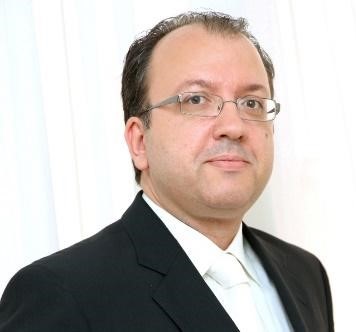 Christos Kalialakis
Christos Kalialakis
christos.kalialakis@cttc.es
Christos Kalialakis was awarded the Ph.D. Degree in electronic and electrical engineering from the University of Birmingham, UK, in 1999. Since 2002, he has been employed at the National Regulatory Authority of Greece for ICT as an expert on wireless communications, and has been a member of the national delegation in International regulatory and standardization organizations (ITU, ECC). He is currently a senior researcher at CTTC, Spain. He serves on the editorial board of Wireless Power Transfer (Cambridge University Press) and the Journal of Communications. He has been an IEEE Senior Member since 2009.
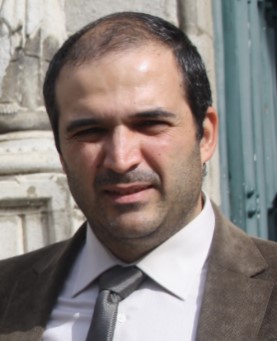
Nuno Borges Carvalho
nbcarvalho@ua.pt
Nuno Borges Carvalho (S’97–M’00–SM’05-F’15) received the Doctoral degree in electronics and telecommunications engineering from the University of Aveiro, Portugal, in 2000. He is currently a full professor and a senior research scientist with the Institute of Telecommunications, University of Aveiro. He is a co-author of Intermodulation in Microwave and Wireless Circuits (Artech House, 2003), Microwave and Wireless Measurement Techniques (Cambridge University Press, 2013), and White Space Communication Technologies (Cambridge University Press, 2014). He is associate editor of the IEEE Transactions on Microwave Theory and Techniques, IEEE Microwave Magazine, and the Wireless Power Transfer Journal. He is co-chair of the IEEE MTT-20 Technical Committee. He is the co-inventor of four patents and the recipient of the 2000 IEE Measurement Prize.
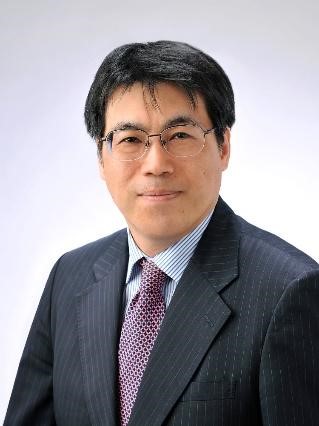
Naoki Shinohara
shino@rish.kyoto-u.ac.jp
Naoki Shinohara received the Ph.D (Eng.) degree in electrical engineering from Kyoto University, Japan, in 1996. He has been a professor in the Research Institute for Sustainable Humanosphere, Kyoto University, since 2010. He is an IEEE Distinguish Microwave Lecturer, IEEE MTT-S Technical Committee 26 (Wireless Power Transfer and Conversion) vice-chair, the International Journal of Wireless Power Transfer (Cambridge Press) executive editor, past technical committee chair for IEICE Wireless Power Transfer, and is chair of the Wireless Power Transfer Consortium for Practical Applications (WiPoT).
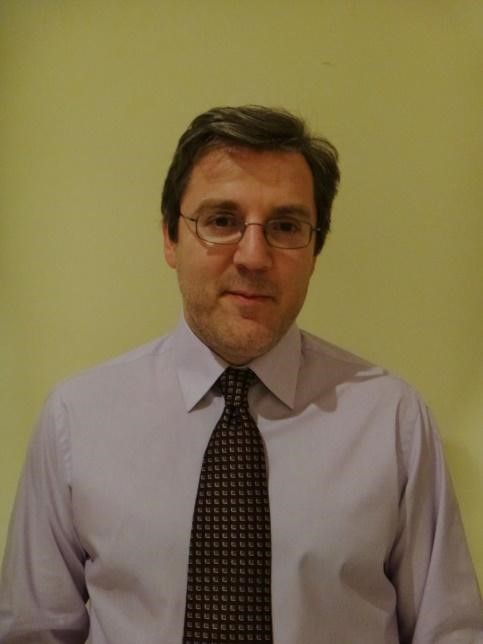
Apostolos Georgiadis
apostolos.georgiadis@ieee.org
Apostolos Georgiadis received the Ph.D. degree in electrical engineering from the University of Massachusetts, Amherst, in 2002. He is senior researcher and microwave systems and nanotechnology group leader at CTTC, Spain. He is vice-chair of EU COST IC1301 on wireless power transfer for sustainable electronics. He is associate editor of IEEE Microwave Wireless Components Letters, editor-in-chief of Cambridge Wireless Power Transfer, past chair of IEEE MTT-24 on RFID Technologies, and a member of IEEE MTT-26 on wireless energy transfer and conversion. He is vice-chair of URSI Commission D, and a distinguished lecturer and VP of conferences of the IEEE council on RFID.

